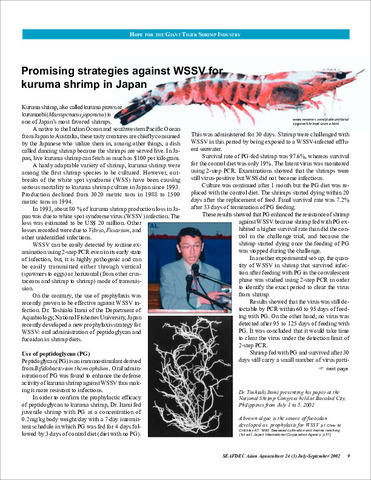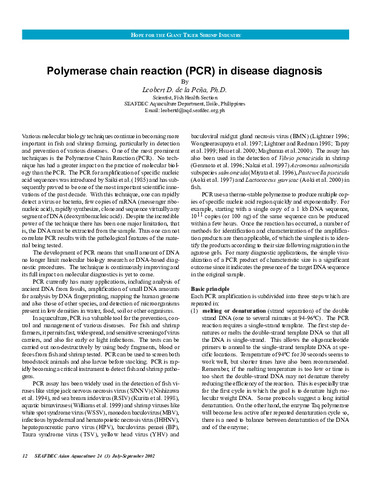Towards Ensuring the Safety and Viability of Seafood: the Regional Guidelines on Cold Chain Management of Fish and Fishery Products in the ASEAN Region
Share
abstrak
Seafood is a perishable commodity that undergoes several chemical and biological changes immediately after capture or harvest. With inadequate temperature control protocols along the supply chain, the quality, and safety of the seafood could deteriorate. Adoption of proper cold chain management and monitoring at every stage of the supply chain is critical in order to extend the shelf-life of seafood and ensure its freshness, safety and economic value. In conformity to the need to ensure the safety and quality of fish and fishery products, the ASEAN-SEAFDEC Member Countries adopted in 2011, the Resolution and Plan of Action on Sustainable Fisheries for Food Security for the ASEAN Region Towards 2020 that includes provisions calling for the ASEAN And SEAFDEC to: “Optimize the utilization of catch from water to market by reducing post-harvest losses and waste to increase fish supply and improve economic returns through promotion of appropriate technologies and facilities along the supply chain” (Resolution No. 20), and specifically, “Introduce and provide support for the development and application of technologies that optimize the utilization of catches, reduce post-harvest losses, wastes and discards in commercial and small-scale fisheries and processing operations, through improved processing, facilities and infrastructure development, on-board and on-shore handling, storage, distribution and marketing if fish and fishery products” (Plan of Action No. 58), and “Promote and conduct training programs and develop training materials to upgrade the technical skills and competencies of personnel in the public and private sectors on fisheries post-harvest technology and food safety management system” (Plan of Action No. 63).
In responding to such call, the Government of Singapore allocated funds for the implementation of a project aimed at creating a platform for the ASEAN Member States (AMSs) to share knowledge, experiences, and cost-effective technologies on cold chain management of seafood, and developing generic guidelines on cold chain management for fish and fishery products to serve as benchmark for the AMSs in developing their respective national guidelines. Implemented by the former Postharvest Technology Centre of the Agri-Food and Veterinary Authority of Singapore (now the Marine Aquaculture Centre of the Singapore Food Agency) as the SEAFDEC Collaborating Centre for the programmes of the SEAFDEC Marine Fisheries Research Department (MFRD), the project on Cold Chain Management for Seafood involved assessment and pilot trials of cold chain management in the AMSs and consultation workshops, the results of which had been used to develop the generic guidelines on cold chain management.
Suggested Citation
Yihang, O. (2020). Towards Ensuring the Safety and Viability of Seafood: the Regional Guidelines on Cold Chain Management of Fish and Fishery Products in the ASEAN Region. Fish for the People , 18(2), 29-31. http://hdl.handle.net/20.500.12066/6560
Subjek
Koleksi
Related items
Showing items related by title, author, creator and subject.
-
Promising strategies against WSSV for kuruma shrimp in Japan
Itami, Toshiaki (Aquaculture Department, Southeast Asian Fisheries Development Center, 2002) -
Polymerase chain reaction (PCR) in disease diagnosis
de la Peña, Leobert D. (Aquaculture Department, Southeast Asian Fisheries Development Center, 2002) -
The Agusan Marsh and the Agusan River Basin: The need for science-based development and management
Primavera, Jurgenne (PCAARRD-DOST, 2013)





